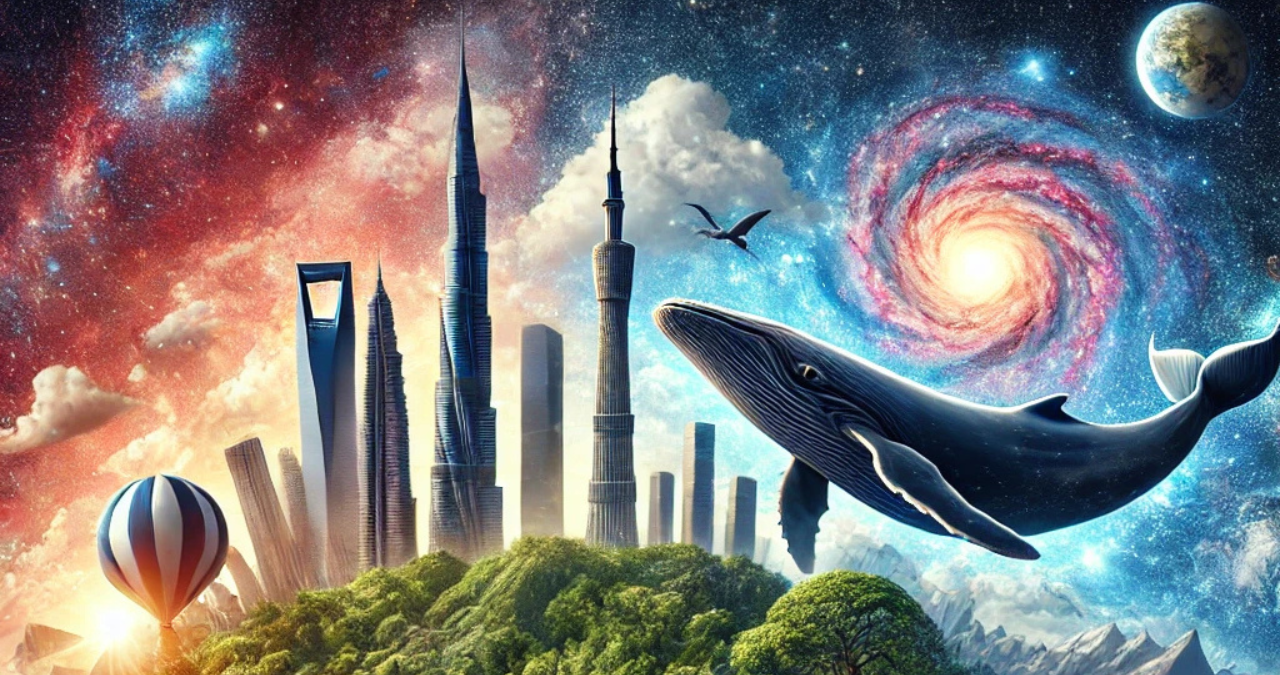When we think about the “biggest thing in the world,” our minds may wander to natural wonders, artificial marvels, or even astronomical phenomena. The concept of “biggest thing in the world” depends on various factors, including physical size, weight, volume, and influence. This article will explore what it means to be the biggest thing in the world, how this concept applies across different fields and some fascinating examples from around the globe and beyond.
Understanding “Biggest” Across Dimensions
The term “biggest” can mean different things based on the context. Here are some standard parameters used to define something as the biggest:
Physical Dimensions (Length, Width, Height)
- Example: The Burj Khalifa in Dubai is the tallest building in the world at 828 meters. Its physical height makes it the most enormous skyscraper.
Mass and Weight
- Example: The blue whale is the heaviest living animal, weighing up to 200 tons.
Volume
- Example: The Great Barrier Reef in Australia is the most extensive coral reef system by volume and area.
Population or Capacity
- Example: The largest stadium in the world, Rungrado 1st of May Stadium in North Korea, can hold over 114,000 people.
Influence or Impact
- Example: The Internet can be considered the biggest network in the world, connecting billions of people globally.
Examples of the Biggest Things in the World
Biggest Natural Wonders
- The Pacific Ocean
- The ocean, covering over 63 million square miles, is the largest in the world. Its vastness impacts global weather patterns, ecosystems, and marine life.
- Mount Everest
- Mount Everest, at 8,848.86 meters, is the tallest mountain above sea level. It symbolizes the extremes of Earth’s natural formations.
- The Amazon Rainforest
- The Amazon is the largest tropical rainforest, spanning nine countries. It is critical in the Earth’s oxygen cycle and climate regulation.
Biggest Living Organisms
- Blue Whale
- As the largest animal on Earth, the blue whale can grow up to 100 feet long and weigh as much as 33 elephants.
- Pando (The Trembling Giant)
- This clonal colony of quaking aspens in Utah is considered the largest organism by mass, weighing over 6,000 tons.
- Armillaria Ostoyae (Humongous Fungus)
- Located in Oregon, this fungal network spans 3.4 square miles, making it the largest living organism by area.
Biggest Human-Made Structures
- The Great Wall of China
- Stretching over 21,000 kilometers, it is the longest and one of the most iconic artificial structures.
- International Space Station (ISS)
- Orbiting Earth, the ISS is the largest artificial satellite, measuring 109 meters end-to-end.
- Dubai Mall
- As the world’s largest mall, it covers over 12 million square feet and includes more than 1,200 stores.
Biggest Astronomical Entities
- The Sun
- The Sun is the largest object in our solar system, containing 99.86% of its total mass.
- IC 1101 Galaxy
- This is the largest known galaxy, stretching 6 million light-years across and housing trillions of stars.
- The Observable Universe
- Spanning 93 billion light-years, it is the largest known entity, encompassing everything we can observe.
How Do Scientists Define the Biggest?
Scientists use specific criteria to classify something as the biggest. These include:
- Measurements and Metrics
- Advanced tools like satellites, lasers, and scales help measure size, volume, and mass with precision.
- Comparative Analysis
- By comparing similar entities, scientists determine which stands out in size or scale.
- Impact Assessments
- The biggest things often have significant ecological, social, or cosmic impacts, influencing their categorization.
Why Does “Biggest” Fascinate Us?
The idea of the “biggest thing in the world” captures our imagination because it pushes the boundaries of what we know and understand. It inspires curiosity, ambition, and appreciation for the natural and artificial wonders around us.
- Sense of Scale
- Exploring the biggest things helps us grasp the vastness of our world and beyond.
- Technological Achievement
- Human-made giants like skyscrapers and space stations symbolize innovation and progress.
- Natural Wonders
- Nature’s giants remind us of Earth’s incredible biodiversity and the importance of preservation.
FAQs About “Biggest Thing in the World”
- What is the most prominent living organism in the world?
The biggest living organism by area is the Armillaria ostoyae fungus in Oregon, while the largest by mass is the Pando aspen grove in Utah.
- Which is the most significant artificial structure?
The Great Wall of China is the longest structure in the world, while the International Space Station is the largest in space.
- What is the most significant astronomical entity?
The observable universe, spanning 93 billion light-years, is the largest known entity.
- Why is the concept of “biggest” relative?
The definition of “biggest” depends on the criteria, such as physical size, weight, or influence, making it a relative concept.
- How do scientists determine the most significant thing in a category?
Scientists use precise measurements, advanced tools, and comparative analysis to classify entities as the biggest.
Conclusion
The term “biggest thing in the world” encompasses a fascinating range of subjects, from the ocean’s depths to the universe’s farthest reaches. Whether it’s a towering mountain, a sprawling galaxy, or a monumental human creation, each “biggest” entity tells a unique story of scale, significance, and wonder. Exploring these marvels broadens our horizons and deepens our appreciation for the world and the universe we inhabit.
You May Also Read: https://ventsbuzz.pro/
